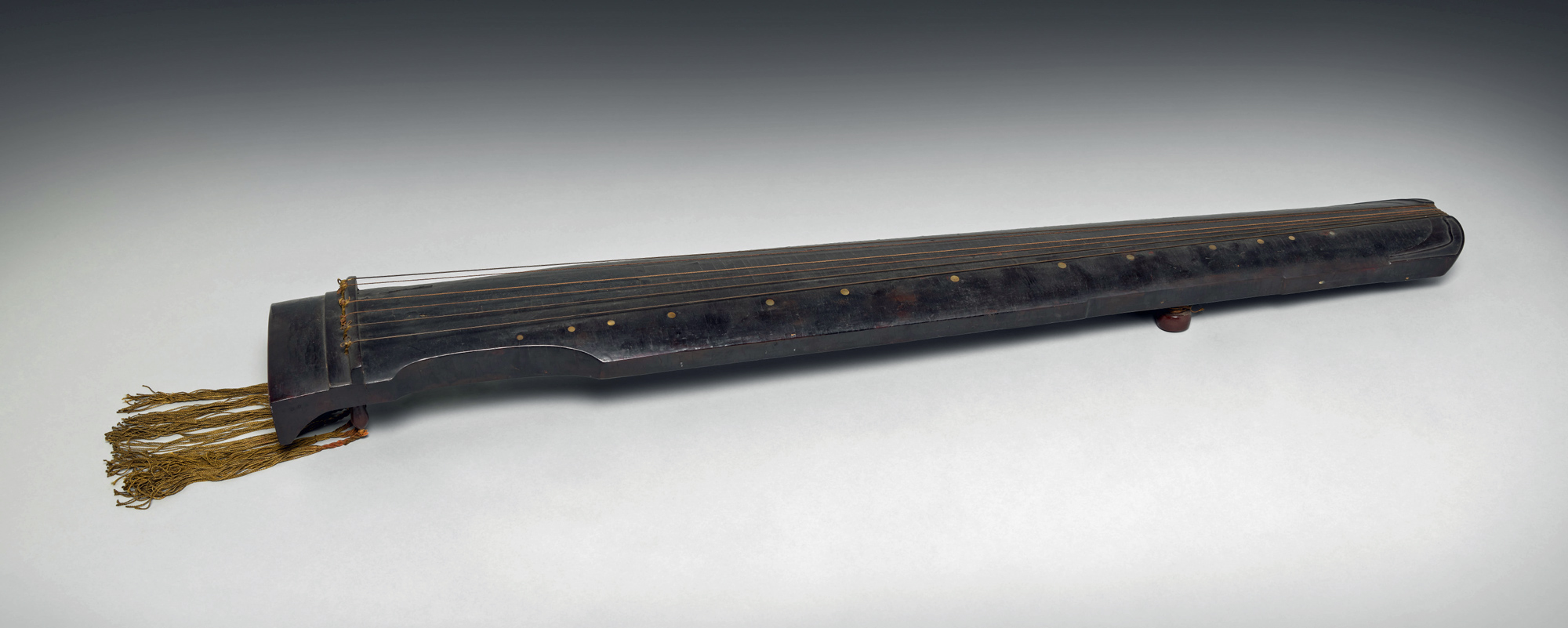|
T of C
Home |
My Work |
Hand- books |
Qin as Object |
Qin in Art |
Poetry / Song |
Hear, Watch |
Play Qin |
Analysis | History |
Ideo- logy |
Miscel- lanea |
More Info |
Personal | email me / search me |
| Collections / Museum website | 首頁 |
|
Cleveland Museum of Art
11150 East Blvd., Cleveland, Ohio 44106 |
克利夫蘭藝術博物館
1
One qin 2 |
| The collection includes this Ming dynasty qin |
 The qin/guqin shown on the
museum website is one I have not yet personally seen. It is said to have belonged to the famous qin player 嚴澂 Yan Cheng (1547-1625), whose repertoire was documented in the qin handbook called 松絃館琴譜 Songxianguan Qinpu (1614). It only goes on display for special exhibitions or event, but a recent addition to the museum's commentary on this qin outlines the case for it being an instrument of some historical significance:
The qin/guqin shown on the
museum website is one I have not yet personally seen. It is said to have belonged to the famous qin player 嚴澂 Yan Cheng (1547-1625), whose repertoire was documented in the qin handbook called 松絃館琴譜 Songxianguan Qinpu (1614). It only goes on display for special exhibitions or event, but a recent addition to the museum's commentary on this qin outlines the case for it being an instrument of some historical significance:
"天池 Tianchi" was a nickname of Yan Cheng; 海虞 Haiyu is a district that includes 常熟 Changshu, which grew up around Mount Yu (虞山 Yu Shan). As this was the home town of Yan Cheng, his style of qin play came to be called the Yushan School (虞山牌 Yu Shan Pai). This is commonly said to have been the most influential qin school during the Qing dynasty.3
The qin, apparently acquired by the Museum in 1918, has very ancient silk strings (image).
Footnotes (Shorthand references are explained on a
separate page)
1.
Cleveland Museum of Art (克利夫蘭藝術博物館;
Museum website)
(Return)
2.
Qins in the Cleveland Museum of Art
Searching for "guqin" in the
Museum collections search engine yields one guqin (mentioned above) and two paintings. One of the paintings, by Tang Yin, is connected to Ji Kang (Xi Kang: see comment) and the melody Guangling San.
(Return)
3.
Yushan School (虞山牌 Yu Shan Pai).
Exactly what this claim means is not clear. Yushan school does not appear on this chart of traditional schools existing in the 20th century. It is clear that the Yushan school of Yan Cheng evolved during the Qing dynasty. And certain players today, in particular Wu Wenguang (who was born in Changshu), have been called inheritors of the Yushan style. But as yet I have not seen any analyses either of that evoluation or that otherwise connect Yushan with Wu Wenguang and/or the schools named in the chart. (further comment).
(Return)
Return to museums and libraries or the Guqin ToC